December 10, 2021
Air Date: December 10, 2021
FULL SHOW
SEGMENTS

Coping With COVID in the Holidays
View the page for this story
As Americans prepare to travel and gather in the winter holiday season, we consider how to do so safely in this era of the pandemic. Hosts Steve Curwood and Bobby Bascomb talk to public health expert Joe Allen of the Harvard T.H. Chan School of Public Health on the best practices for keeping safe during this time of year. (14:28)

Medical Plastic Linked to Breast Cancer Relapse
View the page for this story
Breast cancer is the leading cause of cancer death among women worldwide, and endocrine disrupting chemicals are partly to blame. One such chemical is DEHP, a phthalate chemical commonly used in plastic hospital intravenous bags and medical tubing, and a recent study finds that it’s interfering with breast cancer treatment and augmenting the odds of relapse. Pete Myers, the founder and chief scientist of Environmental Health Sciences, talks with Host Steve Curwood about the study findings and how to protect patients from harm caused by endocrine disrupting chemicals. (11:50)
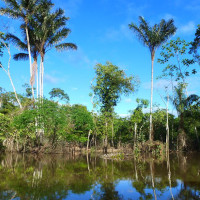
Beyond the Headlines
/ Peter DykstraView the page for this story
This week on Beyond the Headlines, Environmental Health News Editor Peter Dykstra joins Host Bobby Bascomb to talk about a plan by Indigenous groups in Peru and Ecuador to protect 80% of the Amazon in those nations; a hidden gem in the $1.2 trillion dollar infrastructure bill that will help salmon swim free; and in history, a look back to a deadly fog in London. (04:27)
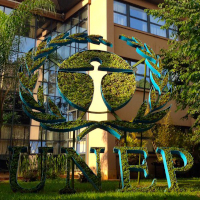
The Untold Story of the U.N. Environment Program
View the page for this story
The United Nations’ environmental authority has labored in relative obscurity from its base in Nairobi, Kenya for nearly 50 years. A recent book, The Untold Story of the World’s Leading Environmental Institution: UNEP at Fifty, charts the challenges and successes of the UN Environment Program and looks ahead to the next half century. Author Maria Ivanova joins Host Steve Curwood to talk about UNEP’s creation, its longest-serving director, and how it brought nations together on the ozone hole and marine pollution. (09:39)
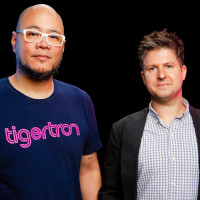
Climate Cyber Games
/ Gabriell UrtonView the page for this story
The video game industry is taking its turn to help fight against climate change. The UN Environment Program launched the Playing for the Planet Alliance in 2019 as a framework for game developers to take part in greening the gaming industry, and to include environmental messages in games. One such developer is Tigertron and Living on Earth’s Gabriell Urton took a dive into their first eco conscious game, Jupiter and Mars. (04:39)
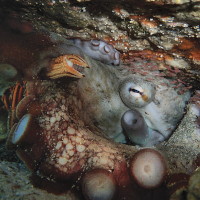
Stay Tuned: A Curious Octopus and Other Underwater Wonders
View the page for this story
Next week on the show, underwater explorer Craig Foster from the Academy Award-winning documentary "My Octopus Teacher" joins Host Steve Curwood to share stories from his remarkable encounters in the Great African Sea Forest. Here’s a taste of what listeners can tune in to hear next week: the moment of first contact with the curious octopus. (01:09)
Show Credits and Funders
Show Transcript
211210 Transcript
HOSTS: Bobby Bascomb, Steve Curwood
GUESTS: Joe Allen, Maria Ivanova, James Mielke, Pete Myers
REPORTERS: Peter Dykstra, Gabriell Urton
[THEME]
CURWOOD: From PRX – this is Living On Earth.
[THEME]
CURWOOD: I’m Steve Curwood.
BASCOMB: And I’m Bobby Bascomb.
Expert advice for traveling and gathering safely amid Covid.
ALLEN: I'm really looking forward to the holidays, I have three little kids, I'm going to be traveling to see family, and we can do it safely. We know what to do. This is not February 2020 where everyone's running around trying to figure out what this novel virus is, how do we control it, who is infected. We know a lot more, we are in a much, much, much better space, the tools are there, people just have to use them.
CURWOOD: Also, gaming for green awareness.
MIELKE: I thought if we can just use environmental causes and concerns as the sort of springboard for our creative ideas that we could speak directly to tomorrow's generation, the generation who is going to be most deeply affected by today's environmental issues.
CURWOOD: That and more this week on Living on Earth – Stick Around!
[NEWSBREAK MUSIC: Boards Of Canada “Zoetrope” from “In A Beautiful Place Out In The Country” (Warp Records 2000)]
[THEME]
Coping With COVID in the Holidays
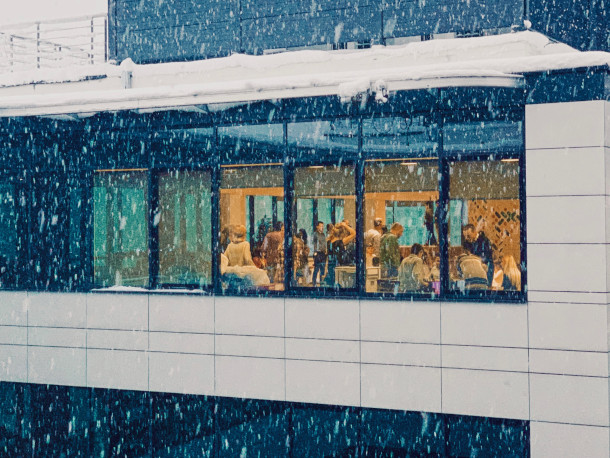
As winter approaches, many are wondering how to safely gather indoors during this era of the pandemic. (Photo: Igor Spasic, Flickr, CC BY 2.0)
CURWOOD: From PRX and the Jennifer and Ted Stanley Studios at the University of Massachusetts Boston, this is Living on Earth. I’m Steve Curwood.
BASCOMB: And I am Bobby Bascomb. And with the end of the year fast approaching, when you know, lots of Americans will be traveling around the country and getting together for family gatherings. And of course, it's important to know how exactly to do that safely with the pandemic these days.
CURWOOD: Yeah, we've been talking about this, Bobby. So, we thought we would just follow up on this question with Joe Allen. Joe teaches exposure assessment science at the Harvard TH Chan School of Public Health. And he's on the line with us now. Hi, there, Joe.
ALLEN: Hi, Steve, Bobby. Great to be back with you.
CURWOOD: Yeah, great to have you back. By the way, since the last time we talked to you, I noticed you've added a few things to your resume. You're now chair of the Lancet COVID-19 Commission Task Force on safe work, safe schools and safe travel, in addition to directing Harvard's Healthy Buildings program, so congratulations.
ALLEN: Well, like everybody in our field of public health of medicine, it's been quite a busy two years and the Lancet work really lets us connect with scientists from all over the world to make sure that the best science is getting out there into people's hands so they can make good decisions at home at work at school.
CURWOOD: So, let's start with one of the questions that Bobby and I were discussing, really, as we're thinking of you, and a lot of people are thinking about this. So, if someone is looking to travel for the holidays, or have people visit who will have to travel to get there, how safe is it for them to be on a plane or another form of mass transit?
ALLEN: Well, I think the first thing we have to do when we think about this is differentiate risk based on a couple key factors, 1.) vaccination status and 2.) age and you know, your immune history and whether or not you’re immune compromised. So, if you're vaccinated and boosted at this point, I think some of this travel is perfectly okay. And your risk is low. In fact, I've been traveling a lot more these past couple months and feel okay. I'm vaccinated, boosted. If you're not vaccinated, clearly, you need to be vaccinated. I mean, we see the vast risk differences in terms of just getting any infection. And if you do get infected, you're high risk, and you will get infected at this point. Delta is so transmissible. We're all going to be exposed at some point. And that virus is going to find your immune system naive, or primed and prepped and ready because you've been vaccinated. So, let's get to your question, though about you know, air travel and some of the specifics. Actually, think we're overestimating the risk of transmission on airplanes. And I don't just think it I've studied this for over a decade. Wrote an article in the Washington Post in early 2020, at the pandemic, when it was just getting started, saying, you don't get sick on airplanes, really. And I think that's surprised a lot of people. I'm happy to talk about why that's the case. But maybe just that is the starting point.
CURWOOD: Well, right. I mean, you get sick in the crowd of people trying to get on the airplane, right, Joe?
ALLEN: Well, that's exactly right. We get sick when we travel, but it's not necessarily in the airplane. So certainly, think about what happens when you travel, right, Steve. You don't sleep well, maybe you're changing time zones, you're mixing with people all over the place bus, subway, a taxi, Uber, security line. Turns out on the airplane, though, when you're sitting in your seat, air quality is very good, because you get a high, what we would call, air exchange rate, maybe 10 or 20 air changes per hour. And for reference, your home is about half an air change per hour. And all of the recirculated air is going through HEPA filters. So, the highest grade filter we have and delivered right at your row and returned out by your feet. So, you know, it's been born out in the science, we've known this for a long time, that if airplanes were this high risk environment, we'd see outbreaks all the time on airplanes. And the fact is, we have billions of travelers, and it can happen, but it's really rare. Now, I just want to flag one thing quickly, during boarding, the ventilation system isn't always running. That's probably the highest risk time when you're… when you're getting on an airplane.
CURWOOD: Yeah, thank God they now fine the airlines if they leave you sitting on the ground for a long time waiting to take off. Bobby, you were talking about what people should do before you get on these planes. Right?
BASCOMB: Yeah, I mean, what steps can somebody take before you travel to sort of, you know, mitigate your risk?
ALLEN: Yeah, Bobby, so the things first, and again, I'm gonna probably, a broken record here, get vaccinated, get boosted. That's number one. That's our top line defense. Second, wear a high-quality mask. And you know, we're well past the stage here, if like any mask will do or just find a cloth mask, you should be wearing a good mask, right? There are N95’s, people have now heard about this. KF94’s is the one I like to wear. It’s a Korean based mask that’s high filter efficiency. And remember the ability of the mask to stop aerosols, what we emit from our lungs, or what other people emit from their lungs that we don't want to breathe depends on the two apps, filtration and fit. So, the N95 designation is the filter efficiency, 95%. Fit is the other part. It's got to be over your nose, flush against your face or else the aerosols are just escaping. So, get vaccinated, get boosted. And then wear a high-grade mask. And you'll be you know, that's about as low risk as you can get.
CURWOOD: What do you mean by Swiss cheese model of protection? I've heard that expression kicked around. What are people talking about?
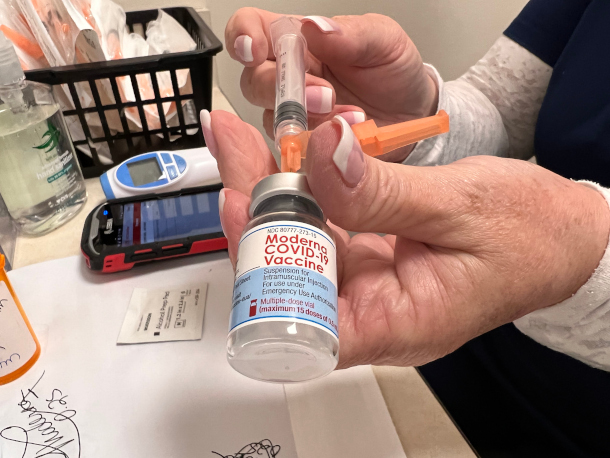
Vaccines and boosters are the most important method of protection for COVID-19. (Photo: Anthony Quintano, Flickr, CC BY 2.0)
ALLEN: Yeah, we've been talking about this since day one of the pandemic really that no one strategy in and of itself is sufficient. So, you want to layer the defenses. And the idea is like Swiss cheese, it has holes in it. But if you layer up enough of these slices of defense, even though some have holes, the virus has a hard time getting through all of them. So, the layers here, the Swiss cheese or vaccinations, boosting, you wear a mask, good ventilation and filtration. You layer enough of these and we can really reduce risk. And in fact, Steve, we've seen this, in every environment, even pre-vaccines. If you have these set of controls in place, this layer defense controls the Swiss cheese model, we can drive down risk, even in the highest risk settings, even like hospitals.
BASCOMB: Now, what about people that can't get vaccinated? I have a four-year-old daughter who's just not eligible yet to receive the vaccine. Is it safe for her to travel or for that matter, to go to holiday parties, be around people that aren't in her usual network?
ALLEN: Yeah, that's a great question. And so maybe starting with risk is subjective, and that, but I'll answer why I think that'd be fine. And I've been advising people in my family who have kids under five, who are not vaccinated that it's okay to do these things. First, the risk to kids is quite low, thankfully, for this virus. And it has been since day one, continues to be the case. And if you want to protect your kids under five who can't get vaccinated, protect them best, the thing to do is get everyone around them vaccinated. All the adults in the house, their siblings, if they have older siblings should be vaccinated. And if you're doing things like travel in these higher risk places, densely occupied spaces, or if you're worried about air travel, they could be wearing one of these high-grade masks.
BASCOMB: And, you know, a lot of people, ourselves included, you know, the Living on Earth, we're thinking about having a holiday party coming up. What are the best practices for groups of people gathering together like that? I mean, should we be opening all the windows and putting on a jacket to get fresh air in there or you know, is cranking up the heat to kill the virus maybe a better approach? What do you recommend?

Open windows increase ventilation and slow spread of any virus particles in the air during an indoor gathering. (Photo: Tetiana Shyshkina on Unsplash)
ALLEN: Yeah, a couple things. So first, we'll start again, everyone should be vaccinated, boosted. I like that. Second, yeah, absolutely. We should be increasing the ventilation and filtration. So, think of it this way, right? We have very little, if any spread happening outdoors. Why is that? Unlimited delusion, unlimited ventilation, this is an indoor problem. So, if you make the indoors a little bit more like the outdoors, pop open a window, if you can, my window right here is open just a little bit, bring in more fresh outdoor, use some of these portable air cleaners with better filtration, that goes a long way into reducing the overall respiratory aerosol load, or the amount of virus that could be in the air if someone was infectious. So, you do those things, you're going to be in pretty good shape, cranking up the heat isn't going to do all that much, make you more comfortable, but it's really not going to do much for the virus. Another strategy you could deploy, which I think is really smart has been underutilized throughout the entire pandemic, since they've been available, are these rapid tests, these rapid antigen tests that you self-swab, put in a little kit gives you an answer in 15 minutes, it tells you if you're actively infectious. So, you could imagine your holiday party, everyone's vaccinated, boosted, maybe there's some young kids who are not vaccinated, maybe someone hasn't had a chance to get boosted. You could deploy these rapid tests. They're relatively inexpensive. And it'll tell you in that moment, are you infectious, if people are negative on that test, you can feel quite good and quite confident that you don't have you know, the potential of introducing someone who could spread to others at that moment.
CURWOOD: Let me take you back on the… on the heat question, though, I thought that the virus doesn't like very warm places, and doesn't like a lot of humidity, I think, tell me, what's the situation there.
ALLEN: We do better when the indoor humidity is around 40 to 60%. And it could be due to a couple different reasons. The first is our defenses and our respiratory system, our lungs, function better when the humidity is in that range for the simple reason that the cells in our lungs are ciliated cells, and they have mucus on them, and they're capturing things out of the air all the time. And those cilia are constantly beating and bringing up things that are captured where we swallow them harmlessly. Well, when it's lower humidity turns out, the cilia beat less often and less frequent, and you have less mucus. So, your respiratory system has less defense when it's not that humid. The other thing that's happening that is important is about how the virus spreads through the air. So, when we talk, sing, cough, we're constantly getting these respiratory aerosols, when it's dry, the larger droplets shrink because of evaporation. When they're smaller, they travel farther in the room, and they stay aloft longer. So, if the humidity is lower than 40%, you could expect more long range transport of the virus. So relative humidity turns out is really quite important. Temperature has a smaller effect. I think it's a little less well understood in terms of the impact. And I'd say even as we think about relative humidity, the most important building level strategy you can do is that ventilation and filtration are going to be more important than humidity or temperature and any of these things that I think operate, they're important, but they operate a little bit more on the margins. Think about it this way, right? We think about these respiratory aerosols, like cigarette smoke, you could influence how long that smoke lingers in a room through temperature, humidity, maybe modifying sunlight and these other these other factors. All of these things matter and they're all acting together, of course. But I think we think about the top line control strategy, you want to dilute what's in that air, you got to bring in that fresh outdoor air, are you going to be cleaning it out of the air constantly.
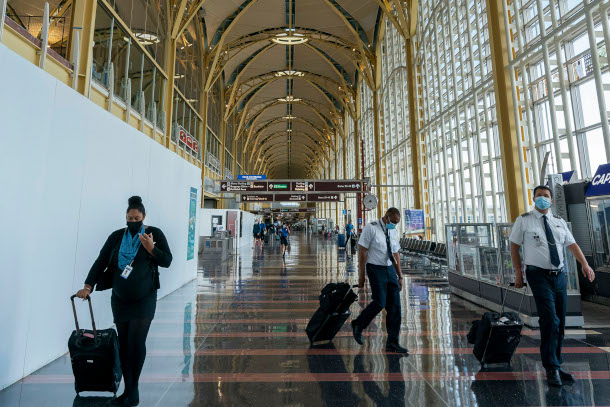
With the proper protective measures, travelers can minimize risk when gathering for the winter holidays. (Photo: Cory Hancock, IMF Photo, Flickr, CC BY-NC-ND 2.0)
BASCOMB: So, in addition to, you know, the $15 Yankee swap gift, should everybody show up with a humidifier to sort of protect themselves?
ALLEN: Well, I like the idea. I'm all for trying to modify our indoor environments to be a little bit healthier. But I'd say before that go with a portable air cleaner, might run you a little more than 15 bucks, but you know, they're not all that expensive. And if they're sized right for the room, they can be very effective. So, you don't need a fancy mechanical system. If you're a few buildings old, and it can't be tweaked very quickly, you buy these things, you can get them at the local hardware store and get them online, everywhere you there, plug and play. Plug them in, turn it on. You could be getting four or five, six air changes per hour when a room might be delivering only half an air change per hour without it.
CURWOOD: By the way, Joe, remind us of how much the amount of virus matters in these situations. Back at the beginning of this, we were told, you know, the more particles the more risk. How accurate is that today?
ALLEN: Well, that's perfectly accurate. And you know, it's a classic Paracelsus, the dose makes the poison. This is it, you want to decrease the viral load. So, we think about that cigarette smoke analogy, you're trying to decrease the amount of smoke or respiratory aerosols in the room, decreases your likelihood of catching this virus. So, I think where the change that's occurred is with the Delta variant is so much more transmissible, meaning that it just takes a little less of that virus to actually cause the infection and it replicates much quicker, people spread it more easily. So that's been the change that has happened over time, one of the hard things to do is we set up controls that we don't exactly know what that dose response is, or what the exact number of virus particles that will cause the infection, but definitely you lower the amount of virus in the air, you lower your inhaled dose, that's gonna lower your risk.
CURWOOD: So, Joe, we're talking to you, today is December 7, and the word Omicron has come into the vocabulary, this variant. And who knows, I mean, by the time people hear this broadcast, we may be talking about yet another variant or… or have more information about Omicron. But people listening to us right now are gonna wonder, okay, what does the Omicron variant do in terms of the advice that you're giving us now?
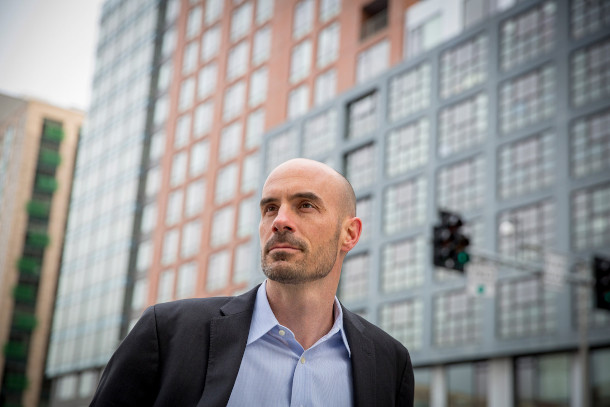
Joe Allen directs Harvard’s Healthy Buildings program. (Photo: Courtesy of Joe Allen)
ALLEN: Yeah, so all eyes on the omicron variant and other variants and so let's talk about it rather than the news that will change kind of every minute, an hour for the next couple of weeks on omicron. Let's talk about these fundamental principles. And the good news is that the fundamental control strategies we've been talking about don't change, they still work. Right? We're talking about the vaccine. That's still going to protect you from severe disease and death. And certainly, you should get boosted. We're talking about the basics of ventilation and filtration, you're removing that virus from the air. That's basic fundamentals. Masks work just the same, right? This omicron, just like delta, just like alpha, and just like the original strain, all travel in respiratory aerosols, that are of different sizes. So, we're talking about basic physics here, you capture it in a mask, you cleaned it out of the air through ventilation, the vaccine and boosters will protect against severe disease and death. And I think what changes is the likelihood of these things happening. Yes, it looks like maybe the likelihood of catching it will be different, the likelihood of a breakthrough infection will change. But these… these fundamentals of risk reduction through reducing inhalation dose is what we're talking about. That holds and that's tried and true. That gets back to decades of control strategies that myself and others have been putting in a building to keep people safe.
CURWOOD: Bottom line, we should be celebrating this holiday season, because it's way different from the one we had before with no vaccines. N’est pas?
ALLEN: No doubt. And I'm glad you said that, Steve, because right, this is not going, no matter what happens, we're not going back to where we were two years ago. I'm really looking forward to the holidays. I have three little kids. I’m gonna be traveling to see family, and we can do it safely. We know what to do. We have the tools. This is not February 2020 where everyone's running around trying to figure out what this novel virus is. How do we control it, who is infected, are old people more impacted, are young people more impacted? We know a lot more. We are in a much much, much better space. The tools are there. People just have to use them.
CURWOOD: Joe Allen directs the Healthy Buildings Program at the Harvard TH Chan School of Public Health, where he's also an associate professor of, what exactly, Joe, you have a very fancy title?
ALLEN: Yeah, the fancy title is professor of exposure assessment science, but really, it's the field of risk assessment, worker health and safety, trying to identify hazards in the built environment and how we control them because we know how to keep people safe in buildings.
CURWOOD: Thanks a lot, Joe, and happy holidays.
ALLEN: Happy holidays to you too.
BASCOMB: Yes, happy holidays. Thanks, Joe.
Related links:
- About Joe Allen
- Joe Allen’s latest book, Healthy Buildings: How Indoor Spaces Drive Performance and Productivity
[MUSIC: Ellis Marsalis, “God Rest Ye Merry Gentlemen” on New Orleans Christmas, Traditional/arranged by Ellis Marsalis, Putumayo World Music.]
BASCOMB: Coming up – How modern medicine could be making some breast cancers worse. Keep listening to Living on Earth.
ANNOUNCER: Support for Living on Earth comes from Sailors for the Sea and Oceana. Helping boaters race clean, sail green and protect the seas they love. More information at sailors for the sea.org. Support also comes from Friends of Smeagull the Seagull and Smeagull’s Guide to Wildlife. It’s all about the wildlife right next door to you!
That’s Smeagull, S - M - E - A - G - U - L - L, SmeagullGuide.org
[CUTAWAY MUSIC: Sultans of String featuring Turkish string ensemble Gundem Yayli Grubu, “Turkish Greensleeves” on Christmas Caravan, Traditional/Band Arr. Chris McKhool, Kevin Laliberte, StringArr. Kadir Okyay]
Medical Plastic Linked to Breast Cancer Relapse
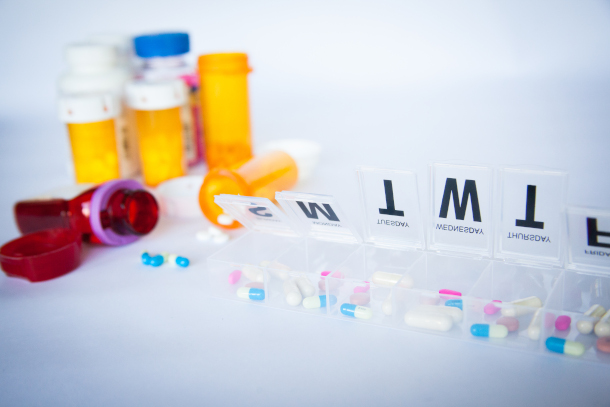
DEHP is a common phthalate found in medical devices that can interfere with the effectiveness of certain cancer treating drugs. (Photo: franchise opportunities, Flickr, CC BY 2.0)
BASCOMB: It’s Living on Earth, I’m Bobby Bascomb.
CURWOOD: And I’m Steve Curwood.
Breast cancer is the leading cause of cancer death among women worldwide, and except in the most affluent nations, death rates keep rising. In the US, where one out of eight women will get breast cancer in her lifetime, survival rates are better, thanks to screening and advanced chemotherapy and hormone treatments. But even in rich nations there are some breast cancer cases that are stubbornly resistant to chemo and hormone therapies, and thus are more likely to spread and recur. Now some government-funded researchers in Taiwan think they may know why. They say a chemical commonly used in Intravenous bags and medical tubing may actually be making breast cancers worse. This chemical is a form of phthalates known by its initials, DEHP, and like many other phthalates, DEHP is an additive used to make plastics soft and pliable. Science already knows DEHP and other phthalates are linked to a variety of disorders from obesity to neurological development problems. And these chemicals enter our bodies in many ways including from a number of cosmetics and fast foods. And now with this recent finding, the health care system itself is implicated in the breast cancer epidemic, with evidence the plastic additive DEHP leached from IV bags and medical tubing can help breast cancer cells evade chemotherapy treatments. Joining us now is Pete Myers, founder and chief scientist of Environmental Health Sciences, the publisher of EHN.org and dailyclimate.org. He joins me now from Petaluma, CA. Welcome back to Living on Earth, Pete!
MYERS: Hi, it's great to be back, Steve, nice to see you.
CURWOOD: So, what did these researchers in Taiwan find out about DEHP and breast cancer?
MYERS: Well, their previous research, which was really interesting and suggestive, indicated that DEHP affects drug resistance, it reduces the effectiveness of certain drugs that are used to treat breast cancer. And what they did, with this paper, is they tried to figure out why that happened. This paper first confirmed their original findings. Patients with higher levels of DEHP don't respond as well to breast cancer treatment drugs, tamoxifen, and doxorubicin. Women who have had breast cancer in the past, are more likely to have it again, when they have higher levels of DEHP. But also, they found that women with higher levels are more likely to die. They have later stage tumors, the tumor sizes are larger. And this was all from the epidemiology, which was the first part of this study. They then did a series of cell and animal tests to figure out, what are the mechanisms that are causing that.
CURWOOD: And the answer is?
MYERS: Well, it's actually kind of clear, they used a classic breast tumor cell line series, and they showed that DEHP inhibits two drugs specifically, as I mentioned, tamoxifen and doxorubicin. And not only did they find that in the human breast tumor cell lines, they found that the same thing happens in the zebrafish model and a mouse model. What is causing this is that the DEHP turns on genes that produce enzymes that increase the degradation rate of the cancer treating chemicals. What this means is every time a person is being treated for breast cancer, and they're being infused with chemicals through IV tubes, what leaches out of the IV tubes is damaging the treatment program.
CURWOOD; So, it's as if the DEHP provides a defense for the cancer. Let me help you stay growing, Mr. Cancer or Ms. Cancer!
MYERS: Yeah, and one of the more interesting findings in these experiments was that DEHP turns on a gene, which geneticists call TFF-3, that actually speeds up the proliferation, invasion, metastasis, and drug resistance.
CURWOOD: Pete, this is somewhat, what's old is new again. I mean, some 30 years ago, Ana Soto at Tufts noticed that experimental breast cancer cells in test tubes were growing faster. She was puzzled by that till she realized, of course, it was related to the plastic.
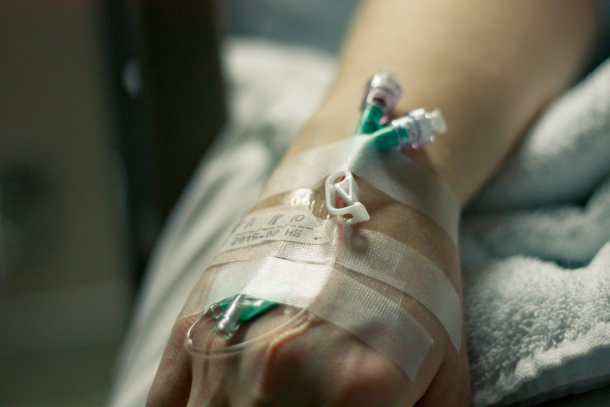
Most medical tubing made from plastic like intravenous bags and tubing contain the phthalate chemical DEHP to make them malleable. (Photo: Bart Heird, Flickr, CC BY-NC-ND 2.0)
MYERS: It was a different plastic, but that's exactly right. And this raises the possibility that these findings that were just reported from Taiwan, that do remind us of Ana Soto's work, and Carlos Sonnenschein's, this may be the tip of the iceberg. How many other pharmaceuticals are impeded by DEHP action? And how many endocrine disrupting compounds interfere with pharmaceutical treatments? This is a really important set of questions that have barely been addressed by the medical community. And if it's true, if these results are replicated, it raises the ante on moving forward with this research.
CURWOOD: I mean, to what extent are the endocrine disrupting chemicals posing a health emergency for us?
MYERS: Well, they've been around a long time. So, it's, it's not like the classic emergency where something has just emerged. What this really represents, I think, is a healthcare opportunity. Because we can, if we begin to act on this, we can begin to decrease the mortality rate and the recurrence rate of breast cancer in women. And that would be a great outcome.
CURWOOD: Now, one does not want to needlessly extrapolate. But how relevant do you think this research is to the whole business of cancer in humans?
MYERS: Well, there are so many, so many variables in that question, Steve, I don't really have the complete answer to that. I can tell you this: that most of the professional organizations like the American Cancer Society have completely ignored the potential contribution of chemicals to causing cancer. They've got to start focusing on that because it's very clear that chemicals do contribute both to the causation and the promotion of cancer. And now we're learning that they also contribute to undermining the treatment programs that they themselves have been responsible for developing. So, they can't continue to ignore this.
CURWOOD: And by the way, just how widespread is DEHP in IV bags and tubing?
MYERS: It's probably in about 80% of IV bags and tubing used in hospitals around the world. There was an effort 20 years ago, to replace DEHP, but it fell short because they discovered that the replacement that was available at the time, led the bags that were used to be weaker. And nurses said, I don't want to use a weaker bag, I need to have a strong bag. And the science on DEHP's contribution was still in development. Now we know how imperative it is that DEHP be replaced, and there are companies working to do that right now. But they, they've got to do this not by pulling a replacement off the shelf and substituting it without testing it, because that's been one of the long-term problems, this field has faced. When you find out that you've got to replace a chemical, you can't just pull a substitute off the shelf, because in all likelihood, that chemical on the shelf has been tested using the same flawed testing procedures that led to the bad thing in the first place. We've got to go and help green chemistry, sustainable chemistry, develop real substitutes. And that's going to involve real testing. If you don't test, you don't know whether or not you have a substitute that you're going to regret.
CURWOOD: Pete, what personal experience, if any, do you have dealing with hospitals and patient care that give you concern about the way DEHP can be in, in the plastics that are used?
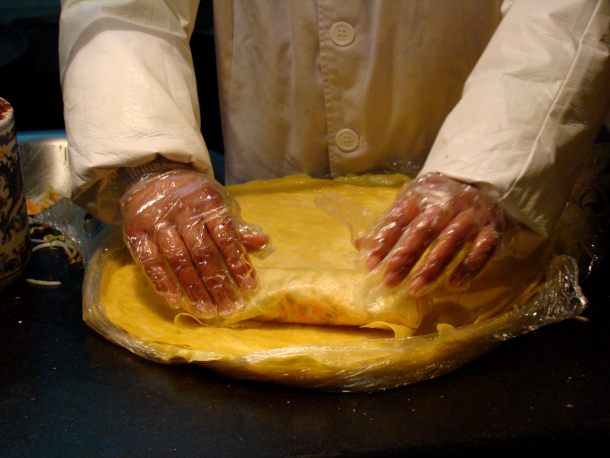
Phthalates are commonly found in plastic food packaging and materials used to handle and process food. (Photo: Daniel Orth, Flickr, CC BY-ND 2.0)
MYERS: Well, I should say that I, I'm getting to the age now where I have to deal with hospitals, myself. And that's opened my eyes to how widespread plastics are. But in particular, I have a granddaughter who's three now and she wound up being born prematurely, two months premature and spent the first two months of her life in the neonatal intensive care unit. And as I would go in to see her and hold her, I would see all these plastics, all over the NICU, the neonatal intensive care unit. And I've been working with endocrine disrupting compounds now for 30 years. So, I know what it means to have an IV system, an IV bag or tube, laced with DEHP. I know the threats that it creates for her long-term health. So, I'm looking at that; I'm thinking, what can I do? At the same time, I'm realizing without those plastics now, she probably wouldn't have lived, because the plastics allow doctors to do miracle things. We've created a conundrum, Steve; it's, it's very troubling, where we, because we developed plastics in an era when this science was nonexistent, we didn't understand the threats that endocrine disrupting chemicals create for people's health, we let plastics and poorly designed plastics that weren't tested adequately become ubiquitous in healthcare. So now what we've got to do is we've got to systematically rethink, which of those plastics are important? How can we redesign the ones that are important so that they don't cause endocrine disrupting problems? And thirdly, we have to think about having the FDA reform the way that it regulates endocrine disrupting compounds throughout society. It's not doing its job.
CURWOOD: So, what's a person to do, most likely a woman who has breast cancer and is getting treated and getting chemotherapy in this equipment? What is she to do in light of this knowledge that these things are supposed to be helping her, but maybe they're making her cancer worse?
MYERS: That's a question that we can't answer right now, Steve. There is no replacement that's ready to slip in. Sustainable chemistry, green chemistry takes time. And so, I guess what I would do if that were me -- and my wife actually had breast cancer, so I've experienced the hospital from that perspective. I didn't know this specific study at the time, but I knew that, actually, I would ask the physician if he was aware, or she, that Bisphenol A interferes with breast cancer treatment, because that study came out about 10 years ago. And that would shock them. And so, I would say, they should ask every person that's involved in their health care, is this an essential use of polyvinyl chloride plastic? If it's an essential use, then how can we minimize it? Because those, those drugs that they're getting, they do increase the chances of recovery. But we also know that failure of the drugs in treatment are causing a significant amount of harm as well. And now we know, we think we know, one of the reasons why that treatments sometimes fail. But there's no easy answer, Steve, it's a, it's a problem that's been building for decades. And we haven't been willing as a society to make the investments to create the new chemicals, which we can do, because we know enough about endocrine disrupting mechanisms that we can design things that don't do it and gradually replace that stuff that's in the hospitals with material that's safer. We have to get people demanding that research be supported and demanding to the hospitals that they push to have the replacements available as quickly as possible.
CURWOOD: Pete Myers is the founder and chief scientist of Environmental Health Sciences. Thanks so much for spending the time with us today, Pete! Great to have you on again.
MYERS: Excellent to see you.
Related links:
- EHN | “Plastic Additive Increases Breast Cancer Relapse, Mortality: New Science”
- ScienceDirect | “DEHP Mediates Drug Resistance by Directly Targeting AhR in Human Breast Cancer”
- EHN | “Promising Growth: DEHP Exposure Research Since DEHP Exposure First Appeared on the Research Field in the '70s, Awareness Has Grown Exponentially”
[MUSIC: Will Lyle, “Above the Clouds” on LA Source Codes, by Will Lyle, wllylejazz.com]
CURWOOD: To get the stories behind the stories on Living on Earth as well as special updates please sign up for the Living on Earth newsletter. Every week you’ll find out about upcoming events and get a look at show highlights, and exclusive content. Just navigate to the Living on Earth website loe.org and click on the newsletter link at the top of the page. That’s loe.org.
[MUSIC: Will Lyle, “Above the Clouds” on LA Source Codes, by Will Lyle, wllylejazz.com]
Beyond the Headlines
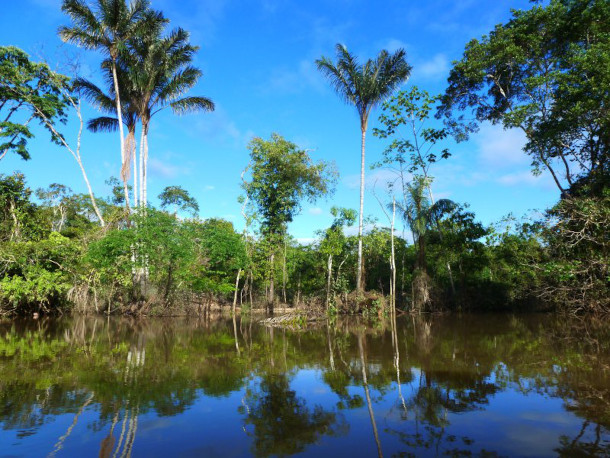
Indigenous groups in Peru and Ecuador unveil a plan to protect 80% of the Amazon in their borders by 2025. (Photo: Global Water Forum, Flickr, CC BY 2.0)
BASCOMB: Well, it's time for a trip now Beyond the Headlines with Peter Dykstra. Peter's an editor with Environmental Health News. That's ehn.org and dailyclimate.org. Hey there, Peter, what do you have for us this week?
DYKSTRA: Hi, Bobby. I'm looking at a news report from a great nonprofit site called Mongabay, that indigenous groups are pushing a plan to the Peruvian and Ecuadorian governments to protect 80% of the Amazon rainforest in those two countries.
BASCOMB: Wow. 80%. That's huge. But of course, the bulk of the Amazon lies within Brazil, which is, you know, less receptive to these types of things, I think.
DYKSTRA: That's right, the Bolsonaro government is considered to be pretty hostile to most measures of environmental protection. They've set their sights on the Brazilian Amazon for heightened levels of exploitation. But at least there's good news from the headwaters area of the Amazon. 86 million acres could be protected if this proposal is embraced. That's just slightly smaller than the US state of Montana, the fourth biggest American state.
BASCOMB: Well, so that's still huge. And I mean, there's just so much biodiversity, in that part of the world. I gather, this is part of the 30 by 30 initiative to protect 30% of the world's land and ocean by the year 2030.
DYKSTRA: It is, and it's an important piece that could be one of the first to be enacted.
BASCOMB: Mm hmm. Well, what else do you have for us this week?
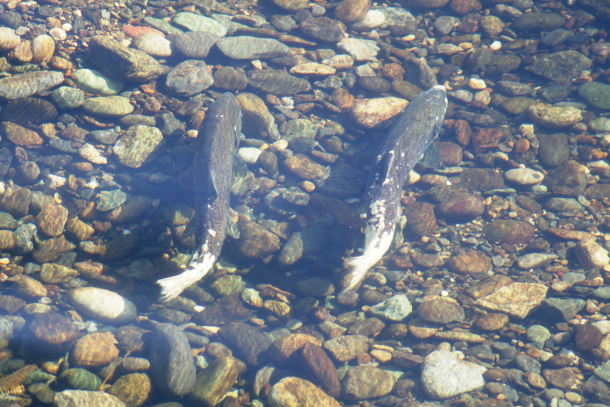
Hidden in the infrastructure bill, a plan to help remove obstacles, like culverts, from salmon’s path in rivers. (Photo: USFWS Pacific Southwest, Flickr, CC BY 2.0)
DYKSTRA: Another good news story that was hidden in the $1.2 trillion infrastructure bill. When you have a $1.2 trillion bill, you can hide a lot of little sweet billion-dollar nuggets in it, and few people will notice. One of them is a billion-dollar fund to help salmon swim free under bridges, culverts, other areas, where anadromous fish like the salmon go up river to breed. Anadromous being one of my favorite words.
BASCOMB: That is a great word anadromous, of course, meaning that they live most of their lives in the ocean, but return to freshwater to spawn.
DYKSTRA: That's right. The sturgeon is another example here on the East Coast.
BASCOMB: And in doing so they gather that they run into a lot of these little obstacles along the way that this money would help remove.
DYKSTRA: Yeah, manmade blockages and putting a road over a stream, putting a stream into a culvert or a tunnel. If you're a salmon, and of course, I'm not saying that you are Bobby, but if you were it, it'd be a tough swim to get upstream to spawn and die and keep your species going.
BASCOMB: Yeah, it's a tough life to be a salmon these days, I'm afraid. And I know there's a lot of these small dams across the country. You know, the big dams have been removed, like in Washington State. But there's a lot of these little dams that maybe haven't been used in 100 years to grind wheat back in the day that are still standing and blocking the way for a lot of these fish.
DYKSTRA: Or obsolete dams that were intended to generate relatively small amounts of electric power that have fallen out of use. The Elwha River in Washington, some of the bigger ones. The Penobscot River in Maine is another one. Rivers flowing free is good news for everybody, and as far as I'm concerned, is a good investment of a billion dollars.

Deadly London smog in December of 1952 finally lifts after days of blanketing the city. (Photo: geograph.org.uk, Wikimedia Commons, CC BY-SA 2.0)
BASCOMB: Mm hmm. Yeah, I'd have to agree with you. Well, what do you have for us from the history books this week?
DYKSTRA: On December 9, 1952, a deadly fog that had sat over the city of London for several days finally lifted. There were as many as 12,000 Londoners that may have died from the mixed impact of foggy weather plus ground level ozone better known as smog, and factory pollution. The US has suffered some of the same. There was another killer fog in Dinorah, Pennsylvania, outside Pittsburgh in 1948, that hit a steel mill and zinc smelting town in the Industrial Belt just upriver from Pittsburgh.
BASCOMB: I gather that the smog in London at least was so bad they actually call them pea soupers. You know that the air was so filthy that people were getting hit by cars and trucks even because they just couldn't be seen.
DYKSTRA: They were. London had always historically been a foggy place. When the Industrial Age hit, it became a more deadly foggy place, which led to laws even before the US passed its own clean air laws.
BASCOMB: All right, well, thanks, Peter. Peter Dykstra is an editor with Environmental Health News. That's ehn.org and dailyclimate.org. We'll talk to you again real soon, Peter.
DYKSTRA: All right, Bobby, thanks a lot. Talk to you soon.
BASCOMB: And there's more on these stories on the Living on Earth website. That's loe.org.
Related links:
- Learn more about Indigenous groups protecting the Amazon
- Learn more about the deal to help salmon swim free
- Learn more about the deadly London fog
[MUSIC: Bobby Cole, “London Bridge Is Falling Down” on Royalty Free Music Effects, public domain]
CURWOOD: Coming up – With more than a billion users worldwide, the gaming industry has huge potential to positively influence behavior. Keep listening to Living on Earth.
ANNOUNCER: Funding for Living on Earth comes from you, our listeners, and United Technologies, combining a passion for science with engineering to create solutions designed for sustainability in aerospace, building industries, and food refrigeration.
[CUTAWAY MUSIC: Phil Cunningham, “Ceilidh Funk” on The Palomino Waltz, Tratitional/arr.Phil Cunningham/Foss Paterson, Green Linnet]
The Untold Story of the U.N. Environment Program
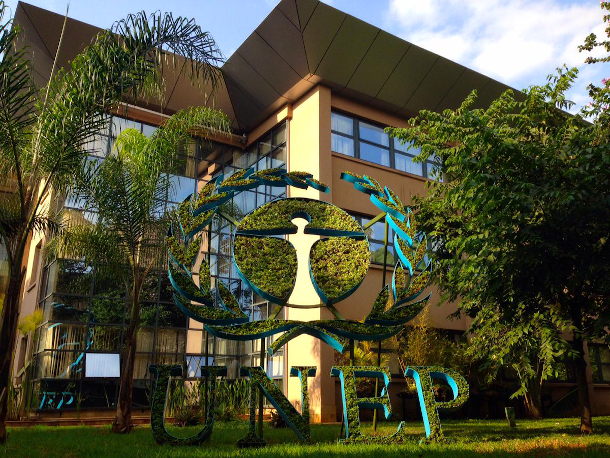
A living logo outside the UN Environment Programme headquarters in Nairobi, Kenya. (Photo: UNEP)
CURWOOD: It’s Living on Earth, I’m Steve Curwood.
BASCOMB: And I’m Bobby Bascomb.
The United Nations’ highest environmental honor went to an inspiring all-female cohort this year. The “Champions of the Earth” award from the United Nations Environment Program recognizes heroes for their impact and leadership in protecting people and planet. The 2021 recipients include two women from Uganda and Kyrgyzstan as well as a group of indigenous women from Papua New Guinea and the Solomon Islands known as the Sea Women of Melanesia. And Prime Minister Mia Mottley of Barbados was honored for her “powerful voice” for a sustainable world.
CURWOOD: We will have more about these inspirational voices in subsequent programs, but today we turn our attention to the United Nations Environment Program itself, the agency that makes these awards, and which often labors in obscurity from its base in Nairobi, Kenya. The Global South is the region of our planet that has long struggled for its voices to be heard on the issues of economics, health, pollution and most fervently, climate change, a crisis which it has done little to cause. Professor Maria Ivanova of the University of Massachusetts Boston McCormack Graduate School has written about the United Nations Environment Program. Her 2021 book is called The Untold Story of the World’s Leading Environmental Institution: UNEP at Fifty, and she spoke with us during a live Living on Earth Book Club event. Ironically, she notes, the United Nations Environment Program got its start in grassroots organizing that included the US.
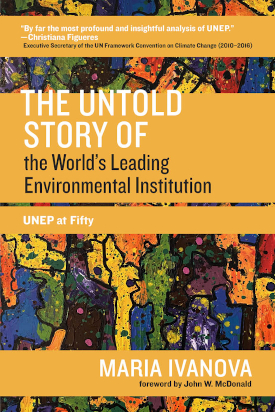
UNEP turns 50 in 2022, and Maria Ivanova’s book celebrates its successes and makes a case for how it can be effective in the next half century. (Image: The MIT Press)
IVANOVA: UNEP's creation was indeed a function of this country, the United States, taking leadership as a result of Earth Day, 50 years ago, when 20% of the population of this country spilled into the streets and demanded different response from its government. And it led to the creation of the institutions that we know in the United States: the Environmental Protection Agency, the various laws, Clean Air Act, Clean Water Act, the Endangered Species Act. And then this country went to the international community and argued that we can't solve the problems alone. And for that, we need an international institution. That's how UNEP was born. And yet, as you say, 50 years on, not everybody knows about the UN Environment Program, while perhaps everybody should. So why don't we know about it? And there are various theories, one of which is perhaps we should think of which international institutions are known. We hear the World Bank, IMF; why do we know about them? Because they're controversial. We hear the arguments against them, about not necessarily all the positive impacts that they're doing. And UNEP has not been in that sphere, has not been that controversial. But maybe also, because the governments that have given funding have not really put it as the priority. The United States has not really propelled UNEP's visibility forward.
CURWOOD: Well, that's right, Maria. To what extent though, has the United Nations Environment Program or UNEP been hiding its light under a bushel? And what I'm thinking about actually, is geography. You know, so many of those active organizations that you mentioned, or highly recognized organizations, are in Geneva, or they're in New York. And typically, for international diplomacy, the world does not go to Nairobi. What impact do you think that has had?
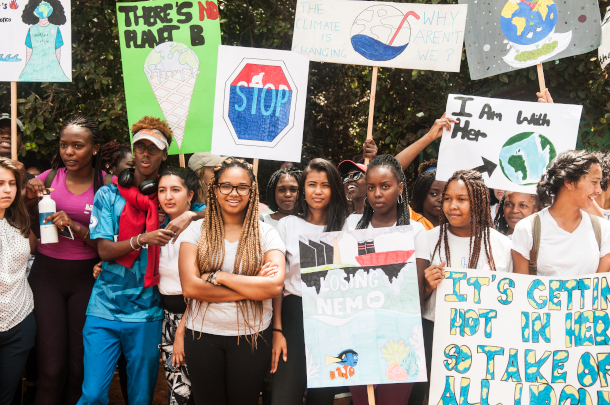
Youth gather in Karura forest in Nairobi in solidarity with the global climate youth marches on March 15, 2019. (Photo: UNEP)
IVANOVA: Connectivity is a really important issue. Look at where we are now. Look, what we're doing -- without connectivity, we could have none of this, of this discussion! We have been grounded; the entire world has been grounded. And yet, we're perhaps most connected than ever, because of this ability. But if we think about it, Steve, this is recent. So, you're right: when UNEP was established in Nairobi, this was radical. It was very radical in 1972, to create an international institution in a developing country. And so, I argue in the book that the location in Nairobi has had an impact on UNEP, a profound impact on the organization. But also, the organization has had a profound impact on its host community, on its host country. And connectivity, indeed, has been a challenge. But it has also been the impetus behind Kenya developing its technological might. And Kenya now is one of the hubs in Africa, of connectivity, of high-tech development.
CURWOOD: Let's talk about some of the successes that UNEP, the United Nations Environment Program, has had everything from the oceans to ozone, those two come to mind for me.
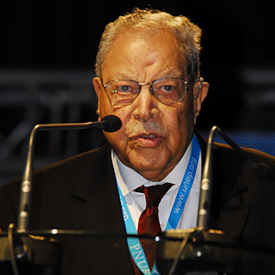
Mostafa Tolba was UNEP Executive Director from 1975 to 1992, seventeen years. (Photo: UNEP)
IVANOVA: Yes, so UNEP did begin with a vision of how do we bring countries together to solve these problems that no one country can solve by themselves? And so marine policy is one of the issues that was first on the agenda. And that was the Mediterranean action plan. And so, if you imagine the Mediterranean, the late 1960s, early 70s, a lot of countries with very different agendas, who are basically polluting the sea by just doing their normal economic activities, but all of the outputs, or outflow, going into the sea. And if you imagine the Mediterranean, its water does not turn around very easily. And so, UNEP brought countries together. And so, when you have Israel and Palestine, and Egypt, and France and Italy, and Greece and Turkey, sit around the same table and have a conversation about a common natural resource that they share, and how to work to resolve these issues, it was radical. That is a clear success of the UN Environment Program. And it's often referred to as the crown jewel, the Mediterranean Action Plan. And then UNEP tried to repeat this in other issues, and you're absolutely right. Ozone is perhaps the only global environmental issue that we have resolved, and the reasons that we often give as scholars are the institutions, and the fact that the United States had a business, DuPont, that came to figure out substitutes, and it pushed for an agreement. But what I tell in the book in some detail was the importance of the leadership, of UNEP as an institution, and of its director at the time, Mostafa Tolba, as the individual.
CURWOOD: Yeah, what was his secret sauce? What was Mostafa Tolba's secret sauce? And you might start by talking about a little bit of his history, where he was from, because as you mention, in particular, back in the Mediterranean story, it's not exactly the, you know, it's not free of contention, to put it mildly.
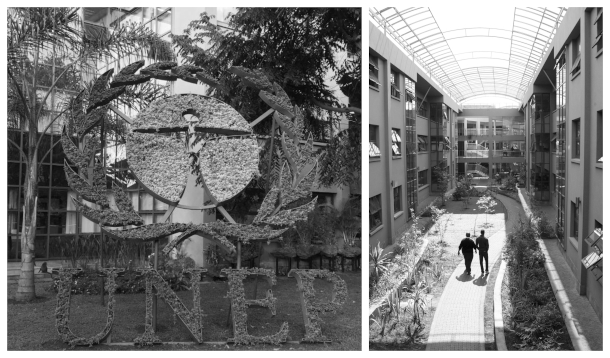
The eco-friendly headquarters of UNEP and UN-Habitat in Nairobi. (Photo: Maria Ivanova and UNEP)
IVANOVA: [LAUGHS] Nothing is free of contention, indeed! So, Mostafa Tolba was the executive director of UNEP, from 1976 to 1993, the longest serving executive director, 17 years. And he had a turn around, he had a come around moment, because he said that he went to Stockholm fully convinced that the environment was a ruse from the developed north to keep the south from development. And he, he said, look, in the Egyptian pound, we have a smokestack. That is the symbol of industrialization, of progress: it's pollution. And yet, he said that the whole Stockholm conference really did lead him to come around and see that the environment was the foundation.
CURWOOD: So of course, you chronicle successes, and then there have been some things that haven't been quite as successful. How do you think UNEP, was able to come through this and… and to survive and thrive as well as it has?
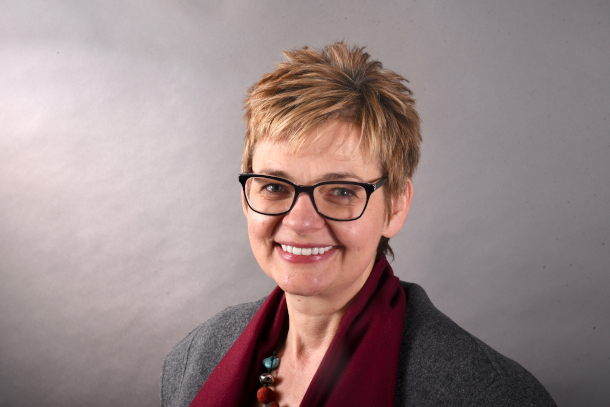
Maria Ivanova is Associate Professor of Global Governance and Director of the Center for Governance and Sustainability at the John W. McCormack Graduate School of Policy and Global Studies at the University of Massachusetts Boston. Ivanova is also a visiting scholar at the Center for Collective Intelligence at MIT. (Photo: Courtesy of Maria Ivanova)
IVANOVA: You're right, it was very difficult for a very small UN body, tucked away in, in Nairobi to have the impact that it was envisioned to have. But also, Steve, UNEP was successful: in naming the issues, bringing the science to the fore, of saying, we need to collaborate and create certain policies and structures, the conventions or as we also know, the multilateral environmental agreements. And I think that now, with connectivity, how that has improved, also of us seeing how important the environment is to basically every aspect of human life, I do think at its 50th now, UNEP has a real chance of reinventing itself, of reimagining itself, of reconfiguring itself to being the institution that it was designed to be.
CURWOOD: Let us all hope, we certainly need, we certainly need it swinging into action. Maria Ivanova is the author of. So, thank you for joining us today, Maria!
IVANOVA: Thank you, Steve! Truly an honor.
Related links:
- Find the book here (Affiliate link helps donate to LOE and local indie bookstores)
- More about the book from the MIT Press
- Maria Ivanova’s website
- About the UN Environment Programme, UNEP
- Interactive map of UNEP offices around the world
[MUSIC: Arturo Sandoval , “Blues En Fa” on My Passion For The Piano, Written By Arturo Sandova, Columbia]
Climate Cyber Games
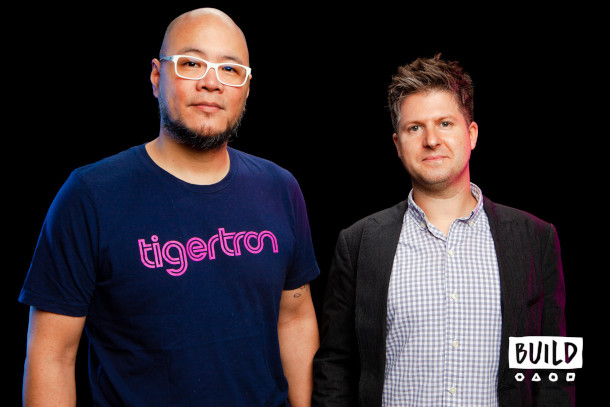
James Mielke and Sam Kennedy are friends and business partners who started the forward thinking eco-conscious game studio Tigertron. (Photo: Courtesy of James Mielke)
BASCOMB: There are more than a billion video gamers worldwide, a huge audience the United Nations Environment Program is tapping to help combat climate change. In 2019 UNEP launched the Playing for the Planet Alliance to give game developers a framework for greening the gaming industry. Developers can join the alliance by making pledges to reduce carbon emissions and plastic in their manufacturing. They can also add environmental messages to their games. One such developer is Tigertron and Living on Earth’s Gabriell Urton has been digging into one of their games for us.
[MUSIC FROM THE GAME]
URTON: Tigertron’s first game Jupiter and Mars features two dolphins on an adventure, swimming through a neon lit ocean. If you play in virtual reality, you are immediately immersed in their underwater world.
MITTERMEIER: Everything was thrown into the seas, and the underwater world was filled the remnants of a dying civilization. Eventually, an endless millennia of taking from this life sustaining planet became too much to bear. When the earth had nothing left to give, the earth walkers eventually disappeared.
URTON: Immersed in the game, you have the sensation of swimming smoothly through the deep sea where you help Jupiter and Mars as they work through problems to reach new levels in the game. In Sunpool, the first level, Jupiter and Mars encounter a Sea Turtle who begs you to save her babies stuck in plastic, as you search for the baby sea turtles and release them from plastic debris you collect points … (Music from game) … then you encounter a whale lost inside an oil slick and swim through demolished buildings underwater. The backdrop is clearly a drowned civilization. But the upbeat music and bright colors make you want to keep exploring and see how many more creatures you can save. James Mielke co-founded the game, and he thinks there is a big market for something like this.
MIELKE: There's a huge amount of gamers out there. And they're very progressive, and they're very proactive in social causes. So, I thought if we can just use environmental causes and concerns as the sort of springboard for our creative ideas that we could speak directly to tomorrow's generation, the generation who is going to be most deeply affected by today's environmental issues.
URTON: Video games have had a bad reputation for encouraging violence, and Mielke says at first, they had a hard time finding environmental organizations willing to work with them.
MIELKE: Because whenever you say video games, a lot of people who are not in video games are automatically think of like the worst things about video games, which is like, you know, first person shooters, violence, gun violence and things like that, especially now in the whole like school shooting era, it's a tough thing. But we did manage to get through to some people who were very progressive, and were switched on about it and recognize this opportunity, as this is something we should be a part of.
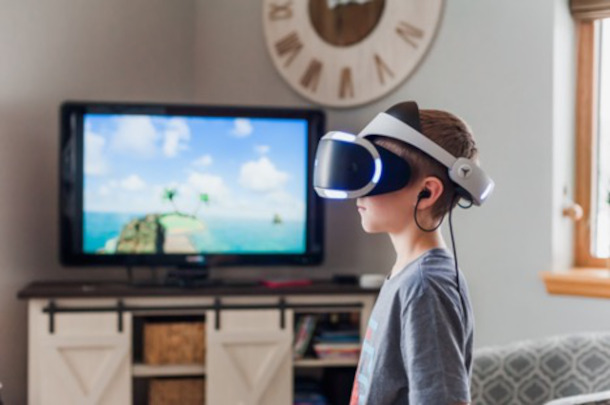
With over 1 billion gamers in the world, environmentally focused games are a unique way to bring climate change awareness to a broader audience. (Photo: Jessica Lewis on Unsplash)
URTON: Mielke says he thinks this is a huge opportunity to encourage conservation in a new way.
MIELKE: There's a big difference between passively watching a planet Earth special on TV, and proactively holding something in your hands, a controller, and being engaged with the game.
URTON: He’s hoping to create a fun game and plant a seed for thinking about these issues.
MIELKE: We don't want to preach to you at every step of the way, because that's just a turn off. So, what we did was we put familiar environments in sort of unusual context in the hopes that, you know, people who walk away from the game, still think about it. And they maybe they Google something like, if all ice caps melted, how high would the sea levels rise? You know, would the Statue of Liberty actually be submerged underwater? Or would it just be her feet? You know? And if we've achieved that, then we've done something, I think, that's organic and meaningful.
URTON: And he might be on to something. There are over a billion gamers, young and old, around the world. And according to the UN's Environmental Program, the gaming industry brings in more money than Hollywood, Bollywood, and the recorded music industry combined. So, if Tigertron can reach just a fraction of that audience and encourage conservation, it could go a long way towards avoiding the dystopian future the game presents.
For Living on Earth, I’m Gabriell Urton.
Related links:
- Read more about the United Nations Environment Programme’s Playing for the Planet Alliance
- UNEP | “Playing for the Planet”
- Tigertron’s website
[MUSIC FROM THE GAME]
Stay Tuned: A Curious Octopus and Other Underwater Wonders
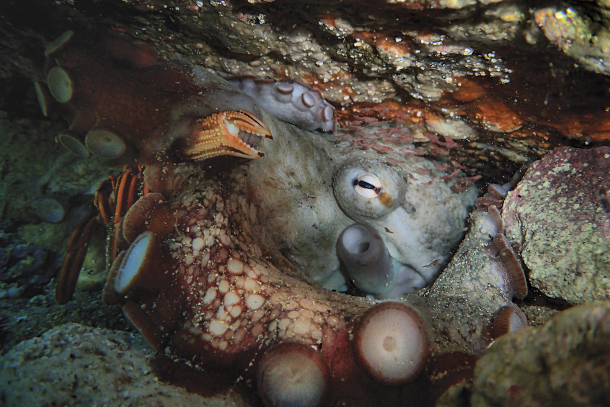
The common octopus Craig Foster connected with in the Great African Sea Forest. (Photo: Craig Foster and Ross Frylinck)
CURWOOD: Next week on Living on Earth, underwater explorer Craig Foster from the Academy Award-winning documentary "My Octopus Teacher" on the unforgettable moment when an octopus first reached out to him and made contact.
FOSTER: They have a natural curiosity. So, their whole lives are balanced between this fear and curiosity. And they're almost like a cat -- you know how curious cats are, they just can't help themselves. And when she's putting that one arm out like that, she's also, all her other arms are attached very strongly to the den. So, she wants to know, she wants to feel, she wants to taste, because they, you know, they can taste with the suckers as well. But she's being very careful. She's putting one arm out and she just can't help herself: What is this strange creature here? What does this thing smell like, taste like? And it's curiosity -- it's sheer curiosity.
CURWOOD: That and other wonders of nature including cuttlefish with an exquisite ability to mimic crabs and shells, and a rare encounter with a Cape clawless otter. The intelligence of wild things in the Great African Sea Forest, next time on Living on Earth.
[MUSIC: The Hit Crew, “Octopus' Garden (Instrumental Version)” on An Instrumental Tribute To The Beatles, Vol. 2, Drew's Entertainment.]
CURWOOD: Living on Earth is produced by the World Media Foundation.
Our crew includes Naomi Arenberg, Paloma Beltran, Jenni Doering, Mark Kausch, Mark Seth Lender, Don Lyman, Aynsley O’Neill, Jake Rego, Genevieve Santilli, Teresa Shi, Gabriell Urton, and Jolanda Omari.
BASCOMB: Tom Tiger engineered our show. Alison Lirish Dean composed our themes. You can hear us anytime at L-O-E dot org, Apple Podcasts and Google Podcasts, and like us, please, on our Facebook page - Living on Earth. We tweet from @livingonearth. And find us on Instagram at livingonearthradio. I’m Bobby Bascomb
CURWOOD: And I’m Steve Curwood. Thanks for listening!
ANNOUNCER: Funding for Living on Earth comes from you, our listeners, and from the University of Massachusetts, Boston, in association with its School for the Environment, developing the next generation of environmental leaders. And from the Grantham Foundation for the protection of the environment, supporting strategic communications and collaboration in solving the world’s most pressing environmental problems.
ANNOUNCER 2: PRX.
Living on Earth wants to hear from you!
Living on Earth
62 Calef Highway, Suite 212
Lee, NH 03861
Telephone: 617-287-4121
E-mail: comments@loe.org
Newsletter [Click here]
Donate to Living on Earth!
Living on Earth is an independent media program and relies entirely on contributions from listeners and institutions supporting public service. Please donate now to preserve an independent environmental voice.
NewsletterLiving on Earth offers a weekly delivery of the show's rundown to your mailbox. Sign up for our newsletter today!
 Sailors For The Sea: Be the change you want to sea.
Sailors For The Sea: Be the change you want to sea.
 The Grantham Foundation for the Protection of the Environment: Committed to protecting and improving the health of the global environment.
The Grantham Foundation for the Protection of the Environment: Committed to protecting and improving the health of the global environment.
 Contribute to Living on Earth and receive, as our gift to you, an archival print of one of Mark Seth Lender's extraordinary wildlife photographs. Follow the link to see Mark's current collection of photographs.
Contribute to Living on Earth and receive, as our gift to you, an archival print of one of Mark Seth Lender's extraordinary wildlife photographs. Follow the link to see Mark's current collection of photographs.
 Buy a signed copy of Mark Seth Lender's book Smeagull the Seagull & support Living on Earth
Buy a signed copy of Mark Seth Lender's book Smeagull the Seagull & support Living on Earth

